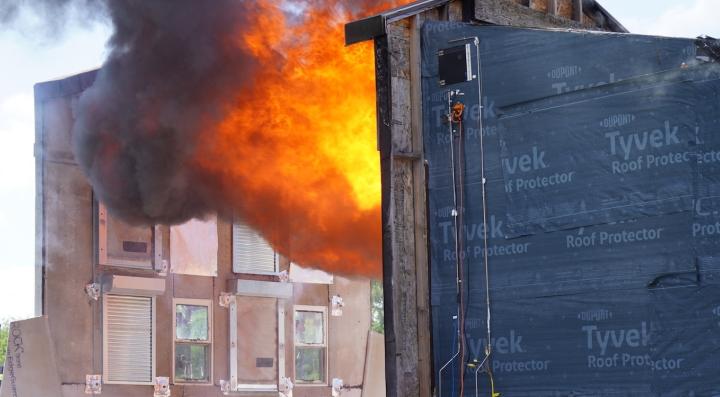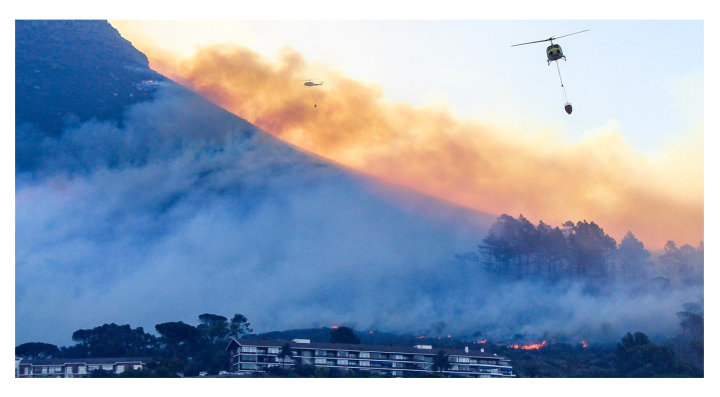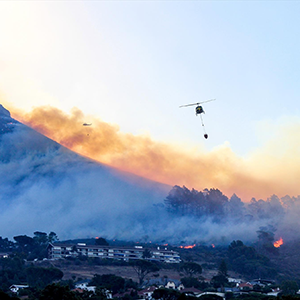
Heat Transfer from Structure Fires

- Overview
- Updates
- Resources
Heat transfer from structure fires is a critical source of fire spread in wildland urban interface (WUI) communities and more populated areas with a high concentration of buildings. Structure-to-structure fire spread can have a considerable impact on loss of life, destruction of infrastructure, and demand on firefighting resources associated with fire incidents. While most pre-fire preparedness efforts focus on removing flammable objects around structures to reduce ignition risk, the radiant heat transfer from a structure fire can cause neighboring structures to ignite. Through this project, the Fire Safety Research Institute (FSRI), part of UL Research Institutes, seeks to understand the process through which heat transfer from structure fires can ignite adjacent structures.
Evaluating Heat Transfer from Structure Fires
The fire engineering community has increasingly focused on understanding structure-to-structure fire spread in the WUI environment. After several structures have ignited, heat transfer to nearby structures can facilitate fire spread through a community and inhibit firefighting operations, fuel management efforts, and evacuation procedures. Additionally, most structures contain combustible materials that leave them vulnerable to ignition. Building materials such as siding, windows, and roofing material—as well as intermediate fuels, such as sheds, vehicles, and decks—may ignite when exposed to prolonged heat and flames from another post-flashover structure fire.
In this study, FSRI conducts experiments in both laboratory and outdoor settings to better understand heat transfer from structure fires and potential vulnerabilities of structures during exterior fire exposure. Experiments focus on several topics:
- Ignition potential of various building material samples during exposures from a heptane spray burner fire
- Characterization of heat flux exposures to exterior targets from a post-flashover compartment fire with an attached façade wall
- Impact of different cladding assemblies and intermediate fuels (i.e., a shed, vehicle, and deck) on fire spread between structures
- Heat transfer through various types of window pane assemblies during thermal exposures from a radiant panel heater as well as from post-flashover compartment fires
- Performance of different cladding assemblies, window pane assemblies, and window frame types during exterior fire exposures
- Effectiveness of potential methods for window protection against exterior fire exposures
Reducing Risk in the WUI Environment
This project furthers the understanding of the risk posed by heat transfer from structure fires igniting nearby buildings. Findings will help improve fire safety for communities at risk of WUI fires and be useful in the development of manufacturing codes and testing standards for building materials. Findings may also enable homeowners living in WUI communities to make evidence-informed home improvement decisions to better protect their homes.
Published: November 15, 2021












